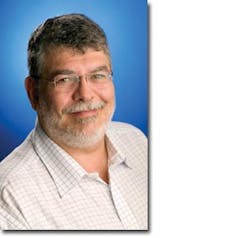ATLANTA — On October 3, with the state Lieutenant Governor, the local mayor, and Eclipse Aviation CEO Vern Raburn in attendance, DayJet Services officially launched its very light jet (VLJ) service in Tallahassee, one of four initial Florida destinations for the company’s ‘per-seat, on-demand’ service using Eclipse 500s. The week before, founder Ed Iacobucci was heavily promoting the upstart at the annual National Business Aviation Association convention, during which this interview took place. For airports and airport-based businesses, two key questions about DayJet and other proposed start-ups that remain are, 1) When is it coming to our community? and 2) How does a service company make being a DayJet partner a profitable experience?
Iacobucci knows something about start-ups, having founded Citrix Systems, Inc. after a prior career with IBM. Prior to the launch, DayJet had become the media darling, bringing an array of exposure. “We’ve had the major networks chasing us on this concept,” he relates. “I saw a report the other day that we reached 20 million households in one day.
“Frankly, from a business standpoint, getting a lot of calls from Minneapolis and Lincoln, NE about when are you going to be here is not really productive. Even when we go beyond Florida, we’re still not going to go to Chicago. We’re going to do adjacent markets. We know where they are. I don’t care if we’re not visible in markets that we’re not in; that’s irrelevant.”
Headquartered in Boca Raton, DayJet Corporation’s wholly owned subsidiary, DayJet Services, LLC, is holder of the Part 135 air carrier certificate from FAA. The company launched its on-demand service with a dozen VLJs, and anticipates having 30 Eclipse 500s in service by year’s end. It has a five-year order for more than 1,000 units.
Initial waypoints include Boca Raton, Gainesville, Lakeland, Pensacola, and Tallahassee. The company plans to expand service within two years to “dozens” of additional DayPort locations across the Southeast.
Explains Iacobucci, “Our model is very simple. It’s based on the one thing that people have told us is worth something to them — time. We don’t place any value on accoutrements, on sitting in the front or back of the airplane. The only thing that matters is how much of my time am I saving?
“The way we express it is, leave no earlier than, arrive no later than If you tell me, ‘I’m willing to leave no earlier than nine in the morning but I have to arrive no later than 10:30 for a one-hour trip,’ that’s going to be pretty close to $4 a mile. If you say, ‘I’m willing to leave as early as six in the morning and I’m willing to be there as late as 1 p.m.,’ then it’s more like $1 a mile.”
So, he says, Boca to Gainesville — about 245 miles — might be $1,000 if the timeframe is tight; if it’s loose, it might be closer to $250. A key component of going to market is DayJet’s Advanced System Technology for Real-Time Operations (called ASTRO) programming, which automates and manages every aspect of the operations.
Becoming a dayport
With limited operations through September, Iacobucci said DayJet had to date used some 35,000 gallons of jet-A. The answer is in response to the question, “What does a fixed base operator get from being a DayPort?”
“Fuel is an important piece,” says Iacobucci. “We’re still exploring this and trying to figure out what is attractive. We are good business partners. I don’t know what the right equation is. At some locations we’re renting space and buying fuel; at others we have a day base operation; we have hangars and more people.
“I’m not exactly sure there’s a magic formula that fits all yet. We are committed to making it work and making our partners successful.
“We’re not expecting the FBO to do everything. We recognized from the beginning that we’re going to have to put our own skin in the game. The rental car goes to the FBO. Our focus is on building service and reliability. We’re not trying to do a broad expansion into all the related services; we want to partner for those.
“We look at the market potential and then identify all the potentials within that. There’s a community level; then there’s an airport/FBO level.”
It’s about connecting communities, says Iacobucci, and he expects a potential destination to do some of the homework — identifying need and commitment.
“From a community standpoint, introduce us to your Chamber of Commerce. Let us talk to your business leaders. Help us develop the benefit for you.
“We’re not interested in fighting our way into a community. If a community doesn’t want us we won’t go there. The economic benefit is very high and the noise profile of the aircraft is very low.”
Even if that commitment is strong and well-documented, he cautions about building new facilities in the short term. “Right now it’s probably not realistic” for a city to be constructing a VLJ-dedicated terminal, as some have suggested, he says. “I don’t know that any of us can tell you what the volume is going to be. I can tell what the model is, but you don’t want to make a capital investment on the model.”





